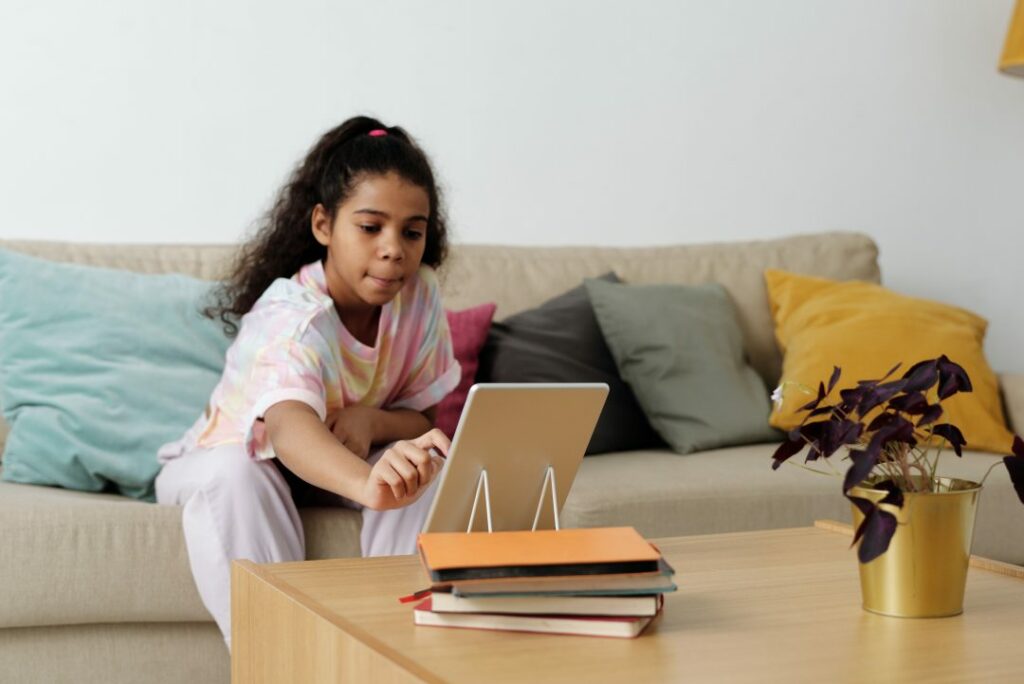Today, in 2021, South Africans are increasingly resorting to an online platform for education. Of course, the concept of electronically aided teaching (also known as e-learning) is not new to the country. Universities are beginning to see that due to the enormous flexibility that virtual education provides, by offering web-based courses, they can cater to all those out there who want to learn but don’t have the luxury of taking years off to study at a physical campus.


1. Lesson-Based Learning
The absence of structure is one of the most challenging things to deal with while transitioning from the classroom to online learning. Meaning, although the internet offers up an entirely new world with more avenues to explore than your child will ever have time to explore (believe it or not), there is undoubtedly a trade-off in terms of controlling your child’s time and ensuring they’re learning effectively.
So, if you can locate chances that are given with structure, go for it. Brainly is one solid example of a lesson-based learning choice, and others include course-based alternatives and those that offer live teaching and self-paced development.
2. Group Learning
To be the devil’s champion, one possible disadvantage of eLearning, particularly when contrasted to classroom learning, is the social component. How will kids acquire crucial social skills if they are alone in front of a computer for hours on end?
It’s an interesting argument, and to counter it, we’d argue it’s all about balance, with parents choosing which levers to pull for their children to become as well-rounded as possible.
However, there are online learning opportunities that provide that critical balance! Virtual summer camps are designed to replicate the summer camp experience online, which means that there is lots of learning as well as fun and interaction.
3. Video-Based Learning
Remember that every child can learn, but they may learn in somewhat different ways – hence, the value of alternate learning experiences, right?
Those students who cannot retain book information or perform poorly on tests now have the opportunity to study through video. They may discover that video concepts “speak to them” at levels that no other teaching source has ever spoken before.
4. Learning With Educational Tablets
Let’s face it: youngsters like their gadgets. So while screen time should undoubtedly be limited for balance, offering a learning opportunity in the form of an educational tablet might be a viable compromise.
There is surely a plethora of learning tablets available, which is both good and terrible, right? But which ones work and which ones don’t? Not to mention that everything taking place on a device would need intense concentration and devotion due to the numerous distractions that may arise.
Tablets like iRainbow are designed especially for educational purposes. So, you can always opt for that and not worry about your child’s distraction while studying.
5. Games and Activity Learning
Linking online learning to something a kid is already interested in is one approach to capture and maintain their attention. As a result, you may discover that connecting with portals provided by networks such as PBS and Nick Jr. is a productive activity, given their presentation of learning possibilities through recognizable cartoon characters.
Again, learning is being disguised as entertainment rather than learning, which may lead to higher buy-in.
6. Course-Based Learning
One significant advantage of course-based eLearning is the built-in advancement, which gives structure to your child’s learning experience when they finish, say, an introductory course A and then proceed to a more intermediate course B, and so on.
Homeschoolers learning to code, for example, may now logically progress from a block-based coding lesson to actually practice putting those blocks together in order to program their tales and animations.
Read more: Common mistakes learners make during an exam
7. Self-Administered Learning
Obviously, there will be some overlap between the various experiences provided by different apps and educational tablets, with many possibilities offering a suite of experiences such as self-pacing, courses, videos, and more.
When it comes to self-pacing choices, the benefit here is a “flexible framework,” which means students may spend as much time as they like studying without being timed or having to keep to a timetable.
8. Blog-Based Learning
All of this being said, perhaps your child does, in fact, thrive on the written word, with their brain acting as a high-performance scanner, absorbing large amounts of written material and committing it to memory.
If this is the case, sites like Time for Kids may be beneficial, as information intake may feel less like a learning activity and more like a leisure activity. Articles also provide information in many ways, and your youngster may prefer a topic presented as a tale with quotations and examples.
Learning Goes Beyond Classrooms…
Online education in South Africa faces a variety of obstacles. However, it is a constructive process that is progressing well. A country where private higher education has increased more than 400 percent in a decade owing to a desire for knowledge and advancement is compatible with a student population yearning to be prepared for employability and skills in a global context and a digital 4IR workplace.
Every kid can learn; they simply learn in various ways.
Sure, some people may struggle in a particular area or subject, but that’s what makes online and alternative learning experiences so fantastic. There is no right or wrong approach, and the “optimal” solution is dependent on you and your circumstances, difficulties, and ambitions.




